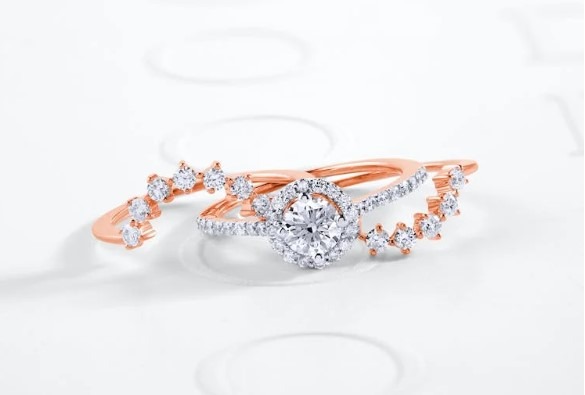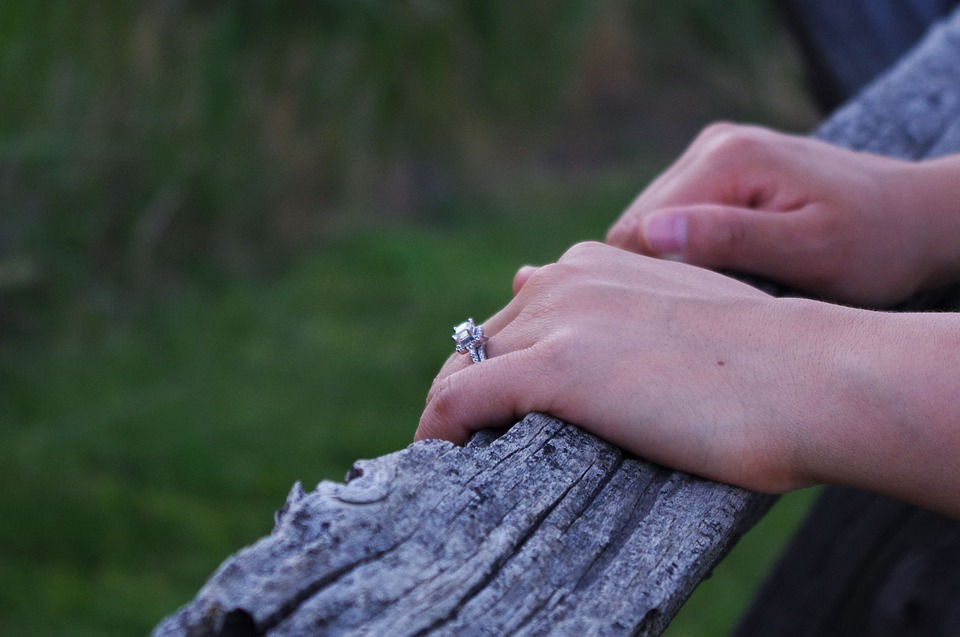Whenever you see a lady wearing a diamond engagement ring on her third finger, it typically indicates that she is already engaged or is getting married. In many countries, many wear a diamond ring on the ring finger of their left hand, while in some countries they prefer to wear it on the ring finger of their right hand. The place where women should wear their rings can be dictated by the age-old tradition and superstition, or simply by their own preference.
No matter on which hand or finger the diamond ring is worn, an engagement ring is always seen as a symbol of love. So if you plan on getting married, one of the must-do things is to find the best diamond ring for your engagement. There are several jewelry stores offering their finest designs at different prices. You can directly go to these jewelry stores to find and pick a ready-made ring for your engagement.
The other option is to buy a loose diamond to make your own ring and take it to the jewelry designers to make a customized engagement ring. There are several shapes and cuts for those loose diamonds. Marquise cut, round cut and princess cut are some most popular cuts for diamonds. However, before buying a loose diamond for your customized ring, you must ask for the certificates that prove the originality of your center stone. Many reputable jewelers and dealers issue certificates to confirm the originality of the products they are selling. You are most likely to see certifications from reputable independent laboratories such as:
- Gemological Institute of America
- American Gem Society
- International Gemological Institute
- Gemological Science International
- GemEx Systems
In school, we always used to do some sort of homework before taking any decisions. In the case of shopping for a diamond engagement ring, it is necessary for you to do your homework before buying a ring. Try to go through the history of diamonds, their origin and their rise to popularity, patterns of western culture, etc. Gathering knowledge about the four Cs of a diamond – cut, carat, color, and clarity – will provide you with vital information necessary to buy the right engagement ring.
Cut: The cut of a is the first and the most important consideration when choosing a diamond. Like many others, you are dazzled by a diamond’s sparkle and brilliance, and these famous characteristics of a diamond rely on the right cut and polishing. In this case, the “cut” refers to a diamond’s reflective quality and proportion, and not its shape (like the round or princess cut – it’s another different matter).
If a diamond is cut and polished just right, the light that it reflects returns out of the top of its surface. If the cut is too shallow, the light will leak on the bottom of the diamond; if the cut is otherwise too deep, the light will escape on the lower side. In other words, a poorly cut diamond will result in a lack of dispersion of light that it reflects. Even if your diamond has a perfect color grade or clarity, if it is cut poorly, it will still lack “fire” or brilliance.
Color: Most diamonds are colorless, but there are ones that are colored as well. The standard grading of a diamond’s color starts with “D” (colorless) and ends with “Z” (pale yellow or light brown). Whether they’re colorless or colored, all diamonds have virtually the same mineral properties to each other. Which means that a colored diamond has pretty much, say, the same durability as the colorless ones. It is simply a matter of choice and preference.
Carat: The weight of a diamond is measured by carat. One carat is equal to .2 gram. So it’s pretty big for a typical diamond ring. Depending on the cut, a one-carat diamond can cost you at least about $4,000. But if you want to save some money, there are other diamonds that weigh less than a carat.

You must know all these things as it will help you to choose the ring for you and discuss the price for the ring you will be selecting.
Before looking for a diamond engagement ring, it is better that you should set a budget for your ring while early. Since an engagement ring is a valuable item, you must keep in mind the amount you are ready to spend for the ring. There are many factors that come into play in a ring’s pricing such as:
- the four “C”’s mentioned and explained above;
- the type of metal being used for a ring’s band (platinum being the most expensive and gold/white gold is the most reasonable choice);
- the type of setting (prong, bar, solitaire, etc.);
- the type of band or shank (straight, tapered, criss-cross, two-tone, etc.); and many more
Knowing all these factors will help you to avoid confusion and enables you to get the best ring possible that your budget allows. If you plan to customize your engagement ring, it will even cost you a lot as you will enlist the help of designers and artisan jewelry makers to come up with the design of an engagement ring that you have envisioned.
Plus, don’t go anywhere without having proper information about the dealer. A diamond engagement ring should always be purchased from a shop that operates legally and has a high reputation to avoid future problems, as well as the possibility of getting scammed. A reputable jeweler will give you product of high quality so that you can get the worth of what you will spend. You will also get documents that prove the diamond engagement ring you are buying is genuine.



